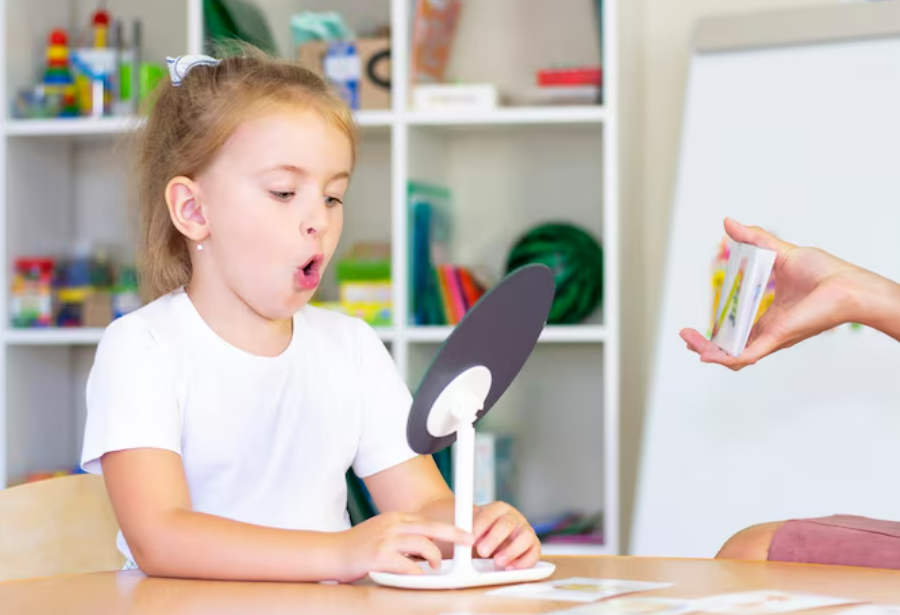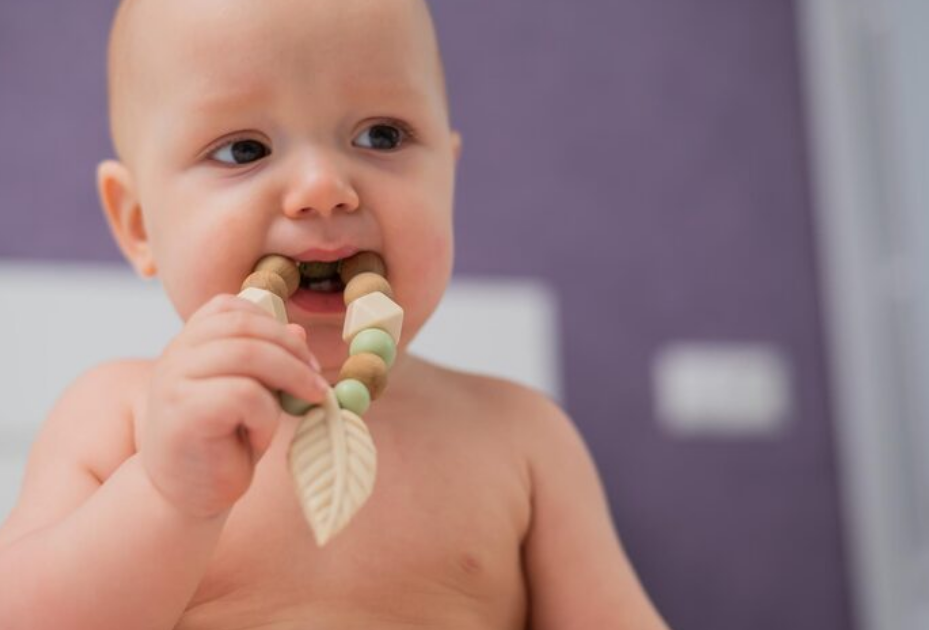How to Select Safe and Effective Chewable Sensory Toys for Kids

You want the best for your child, especially when it comes to their safety and comfort. Choosing the right chewable sensory toys can feel overwhelming. Every kid has unique needs, and you might worry about what is safe or what will actually help. It makes sense to feel cautious. You deserve clear answers and practical tips, so you can feel confident about your choices.
Key Takeaways
Chewable sensory toys help kids with sensory challenges. They can lower anxiety and help kids focus better. Always pick safe toys made from food-grade or medical-grade materials. Make sure the toys do not have harmful chemicals. Choose chewable toys that fit your child’s age and sensory needs. This helps keep them safe and useful. Think about the texture and shape of the toys. Kids like different textures and shapes for sensory play. Check and clean chewable toys often. This keeps them safe and clean for your child.
Why Chewable Sensory Toys

Who Benefits
You may ask if chewable sensory toys are good for your child. Many children find these toys helpful, especially those with sensory challenges. Kids with autism, ADHD, or sensory processing disorder often need more oral input. Some children feel nervous or stressed and want a safe way to relax. If your child chews on pencils, shirts, or other things, chewable sensory toys can be a safer choice.
Here are some groups who often find these toys useful:
Kids with autism spectrum disorder
Children with ADHD
Those with sensory processing disorder
Kids who have feeding or oral motor problems
Children who feel stress or anxiety
Sensory seekers who want more input
Chewable sensory toys help kids control their feelings. They also help with oral motor skills, which matter for talking and eating. Giving your child a chewable toy gives them a safe way to chew.
Tip: If your child chews on things at home or school, a chewable toy can keep their teeth and clothes safe.
Common Uses
Chewable sensory toys can be used in many places, like home or school. These toys help kids focus, calm down, and get along better with others. The table below shows some common ways to use them:
Use of Chewable Sensory Toys | Description |
|---|---|
Oral Stimulation | Lets kids calm themselves and handle too much sensory input. |
Focus Enhancement | Chewing helps kids pay attention in class or while doing homework. |
Moves chewing from unsafe things to a strong, safe toy. | |
Emotional Regulation | Helps lower hyperactivity and supports calm actions. |
Positive Social Interactions | Reduces biting, making play and learning more fun. |
When you pick the right chewable sensory toys, you help your child handle their sensory needs and do well in different places.
Choosing Chewable Sensory Toys
Safety and Materials
When you pick chewable sensory toys, safety comes first. You want to make sure your child chews on something safe and strong. Look for toys made from food-grade or medical-grade silicone. These materials are tough and can handle lots of chewing. They also do not break down easily, so your child stays safe.
Check the label for words like BPA-free, phthalate-free, and lead-free. These chemicals can harm your child, so you want to avoid them. Many top brands use medical-grade materials and design their toys for children with sensory needs. You can see some features in the table below:
Feature | Description |
|---|---|
Material | Durable, medical-grade materials |
Compliance | BPA, Phthalate, and Latex-free |
Target Audience | Children with autism, sensory processing disorders |
Design | Multi-textured for enhanced oral stimulation |
Always look for safety certifications. These show the toy meets strict rules for kids’ products. You should also check the toy for any cracks or weak spots before giving it to your child. A strong chewable aid lasts longer and keeps your child safe.
Tip: If your child is young, always supervise them while they use chewable toys. Avoid toys with small parts, since these can be a choking hazard.
Age and Sensory Needs
Not every chewable toy fits every child. You need to match the toy to your child’s age and their sensory needs. Manufacturers often list age or weight guidelines on the packaging. Always follow these rules to keep your child safe.
Choose chewy toys based on your child’s development and needs.
Avoid small parts if choking is a concern.
Follow the manufacturer's weight and age guidelines.
Think about why your child wants to chew. Some kids chew because they feel anxious. Others chew to help them focus or to get more oral sensory input. If your child has chewing urges during school, a discreet chewable aid may work best. If they need more oral sensory input at home, you might pick a larger or more textured toy.
You can also look at your child’s habits. For example, a child who taps their feet a lot may like a foot fidget band. If your child gets distracted by noise, a silent toy like a marble mesh may help. Watch what triggers your child’s stress or helps them focus. This helps you pick the right chewable for their needs.
Here are some steps to match toys to your child’s needs:
Child’s Preferences: Notice what sensory inputs your child enjoys, like bright colors or different textures.
Sensory Processing Needs: Pick toys that fit your child’s sensory challenges. Make sure the toy does not overwhelm or under-stimulate them.
Developmental Goals: Choose toys that help your child build skills, such as fine motor skills, improved focus, or emotional regulation.
Texture and Shape
Texture and shape matter a lot when it comes to chewable sensory toys. Some kids like smooth toys, while others want bumpy or fuzzy textures. The right texture can give your child the sensory benefits they need and help with chewing urges.
Here’s a table showing how different textures and shapes can help:
Toy Type | Texture/Shape Description |
|---|---|
Chewable Toys | Made from gummy material, providing tactile stimulation and improving jaw strength. |
Slime | Available in various textures (jelly, stretchy, fluffy, crunchy) to meet different sensory needs. |
Plastic Loop | An infinite cylindrical loop with hard, smooth texture and variations in texture (bumpy, fuzzy). |
Stress Balls | Multi-layered with visually and texturally appealing shapes (unicorns, cats, dumplings). |
You should watch how your child reacts to different textures and shapes. Some kids love chewy toys that are soft and squishy. Others want something firm or with bumps. Try a few options and see which one your child uses the most.
Identify the types of sensory input your child enjoys, such as textures and shapes.
Watch how your child interacts with different toys.
Notice your child’s first reaction to a new chewable.
See if your child keeps using the toy over time.
Look for changes in behavior, like more calmness or improved focus.
Ask your child what they think about the toy, if they can tell you.
Choosing the right chewable toy means paying attention to your child’s likes and needs. When you find a toy that matches their chewing urges and gives them the right oral sensory input, you help them feel calm and focused. Chewing toys for autism and other sensory needs can make a big difference in your child’s daily life.
Practical Tips for Parents
Portability and Cleaning
It is important for your child to have a sensory tool anywhere. Portability is key if your child needs chewelry at school or outside. Many chewelry pieces are small and light. They fit in a pocket or hang around the neck. Discreet chewelry helps your child feel comfortable in public. It does not draw much attention.
Cleaning chewelry is easy and keeps your child healthy. Use mild dish soap and warm water to clean it every day. For a deeper clean, use a mix of white vinegar and water or hydrogen peroxide. Eco-friendly cleaners like Seventh Generation also work. Always rinse and dry the chewelry before your child uses it again.
Tip: Keep an extra chewelry piece in your bag for emergencies. This way, your child always has a safe sensory tool ready when needed.
Chewelry and Wearable Options
Chewelry gives your child a safe way to handle stress. It helps lower anxiety and gives comfort. Chewelry comes in many shapes, colors, and firmness levels. Some kids like bright colors. Others want plain ones. Good chewelry is made from safe materials and can handle strong chewing.
Let your child help choose their chewelry. This makes them feel in control and more likely to use it. Pick chewelry that matches your child’s likes. Try new pieces one at a time to see what works. Chewelry like ARK’s Brick Stick Necklace or chew tubes help with jaw strength. These wearable tools also help with stress during the day.
Some kids need chewelry that is easy to hold, like ARK’s Grabber XT. Others do better with necklaces or bracelets. If your child loses things, pick chewelry that stays on, like a necklace. Discreet chewelry makes it easier to use in social places.
Inspection and Replacement
Check your child’s chewelry often for damage. Look for cracks, tears, or holes. If you see any, replace the chewelry right away. This keeps your child safe and makes sure their chewelry works well. Checking often helps you know when your child needs a new one. This way, they always have a safe sensory tool for stress.
Note: Chewelry works best when it is clean, safe, and fits your child’s needs. Stay involved and update their chewelry as they grow and change.
Choosing the right chewable sensory toy starts with a simple checklist:
Think about where and how your child will use the toy.
Match the toy’s strength to your child’s chewing style.
Check for safe, food-grade materials and the right size.
Pick colors, shapes, and textures your child likes.
Make sure the toy fits your child’s age and stage.
Choose toys that are easy to clean.
Look for wearable or attachable options.
Try different types to see what works.
Ask an occupational therapist for advice if needed.
When you follow these steps, you help your child build new skills and feel calm. Your choices support their growth and boost their confidence. Trust your instincts—you know your child best! Every small step you take makes a big difference. 😊
FAQ
How often should I clean my child’s chewable sensory toy?
You should clean the toy every day. Use warm water and mild soap. If your child uses it at school, wash it after each use. Clean toys help keep your child healthy.
What if my child chews through the toy quickly?
Some kids chew harder than others. Look for extra-tough or “XT” versions. Replace the toy as soon as you see damage. Always check for cracks or tears before each use.
Can my child use chewable toys at school?
Yes! Many schools allow chewable sensory toys. Choose a discreet style, like a necklace or bracelet. Talk to your child’s teacher about their needs. Most teachers want to help your child focus and feel calm.
Are chewable sensory toys safe for toddlers?
Most chewable toys are safe for toddlers if you pick the right size and material. Always supervise young children. Avoid toys with small parts. Check the label for age guidelines before you buy.
See Also
Best Sensory Chew Toys for All Ages in 2025
Popular Sensory Toys Chosen by Parents for Children
Identifying When Children Require Sensory Play Items
